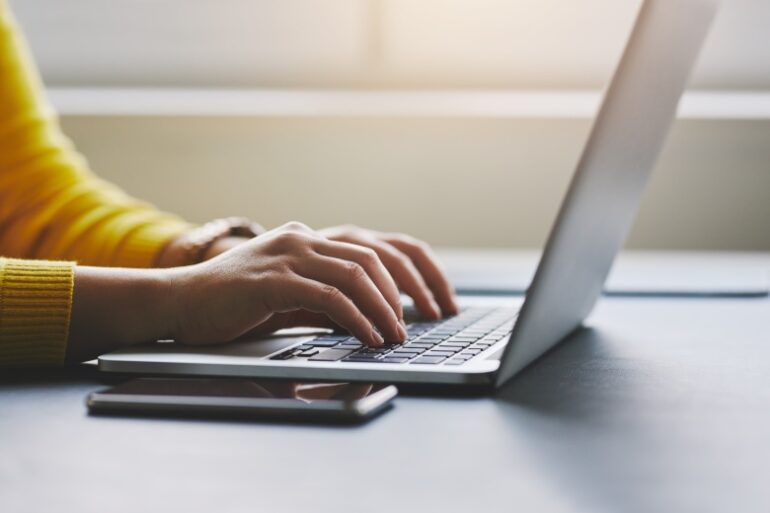Digital devices are amazing as they make our work easier and efficient. Knowing the tricks allows you to use your computer, laptop, smartphones even more proficiently. There are hundreds of shortcuts and time-saving tricks that you can utilize for better productivity.
In this article, we will explain some of the common time-saving tricks that every computer user must be aware of. But shortcut keys work appropriately only when your computer is completely optimized. So, before moving to the shortcut keys, let’s discuss some of the ways that help you gain the most from your computer.
Delete Unnecessary Applications

If your computer is storing dozens of unused applications, RAR archives, and software programs, you can expect delays and lags in system performance. To remove apps that you have downloaded from the internet or the App Store, navigate to the Finder window from the Dock and select Applications from the Finder sidebar.
If the app is stored in a folder, launch the app’s folder and search for an Uninstaller. On locating the Uninstall or similar option, double-click it and follow the instructions. If the app is not stored in its dedicated folder or it does not have an Uninstall option, select the app, drag it to the Trash folder from the current application’s folder, and then empty Trash to delete it permanently from the Mac computer.
In Windows, check out the Downloads folder as most applications are downloaded to this folder by default. While deleting archives such as RAR or ZIP files, make sure to open them and check the contents before deleting them. Visit setapp.com to learn more about the process of opening and managing RAR files.
Empty Trash/Recycle Bin
Deleting applications, files, and folders from your Mac won’t help in clearing space unless you empty the Trash folder. Right-click the Trash icon in the Dock, and select Empty Trash. However, keep in mind that once you remove all the recently deleted items from Trash, you won’t be able to recover them.
Emptying the Recycle Bin in Windows is quite simple, and you can do it in a few simple steps. You need to delete the items of the Recycle Bin to increase the available space on the storage drive. Locate the Recycle Bin icon on the desktop, right-click on it, and select Empty Recycle Bin. Before you empty the Recycle Bin or Trash folder, make sure you have a recent backup so that you can get your data back in the event of data loss.
You can also tweak settings on your Mac and Windows computers to let the deleted items bypass Trash. If you select this option, the items that you delete from your computer will not move to the Trash or the Recycle Bin. The deleted item will get permanently deleted, and you cannot restore it unless you have a recent backup. You can delete free apps and programs permanently to free up volumes of storage.
Disable Login/Startup Items

Startup items, also known as login items, activate each time you start your computer. These programs and apps consume significant CPU resources and influence your system performance. Disabling these items can improve your system performance manifolds.
To disable login items in Windows, tap on the Start button and select Settings. Alternatively, press Windows key + I to navigate directly to the Settings window. Select the Apps option, and click Startup from the left sidebar. You can see the list of startup apps in the right panel and toggle to turn off the items that you do not wish to run automatically on Startup.
To deactivate startup apps in Mac, go to the Apple menu, select System Preferences, and tap Users & Groups. Under Current User, click on your account name, and select Login Items tap from the upper section of the window. Next, select the unnecessary login items and click on – (minus) button to remove the selected items from the computer.
Tips, Tricks & TimeSavers
Let’s learn these productivity tricks to get the best out of the device.
Typing Tricks & Tips
- Press Ctrl + Backspace to delete an entire word towards the left of the cursor.
- Double-click on a word to highlight it without dragging the mouse over it.
- Press Ctrl + Shift to enable Superscript and Ctrl + = to enable subscript.
- Hold down Ctrl + Up Arrow keys to move to the beginning of the para.
- Press Ctrl + Down Arrow keys to move to the end of the paragraph.
- Place the cursor anywhere in the paragraph and click thrice to select the entire paragraph.
- Press Ctrl + Left Arrow to move the cursor quickly to the beginning of the previous word.
- Press Ctrl + Right Arrow keys to move the cursor to the beginning of the next word and repeat it to reach the desired word in the sentence.
Keyboard Tricks & Tips

- Press down the Windows button + D to quit all the open applications simultaneously.
- Press Ctrl + W to close the current window you are working in.
- Select a file and press F to rename it quickly.
- Press Windows + D altogether to minimize all the open windows.
- Press Ctrl + D keys to open the Edit Bookmark window and add the window or webpage to the bookmark list.
- Press Alt + F4 to close the running program.
- Press Shift + Alt + T keys to reopen the recently closed tabs in most browsers.
- Press Ctrl + W to close WinRAR.
Storage Saving Tricks & Tips
- Empty Recycle Bin on Windows and Trash folder in Mac to make more space on storage media.
- Uninstall applications and software programs that you do not use regularly.
- Identify large files and folders and delete them to optimize storage space.
- Delete iTunes files and redundant iOS backups to make space for important files.
- Remove duplicate files, photos, videos, and other multimedia from the computer.
- Store your important files in Cloud drive to view data anywhere and anytime using different smart devices.
- Move essential files, folders, images, videos, apps, etc., to external media to free up storage space on the hard drive.
